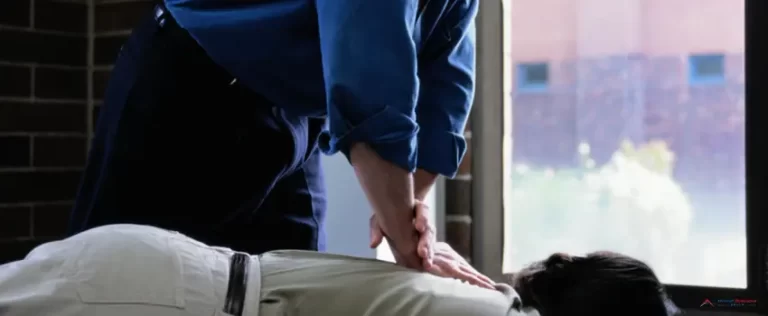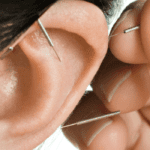Osteoporosis weakens bones, making them more vulnerable to sudden and unexpected fractures.
Spinal manipulation can provide relief for those suffering from this condition. However, not everyone is open to trying spinal manipulation. Although every person has their own needs, chiropractic treatment is a safe and beneficial option for osteoporosis.
If you suffer from this condition, chiropractic adjustments may work wonders. Discover more about osteoporosis and chiropractic as a treatment option. Let Advanced Chiropractors Group guide you.
What Is Osteoporosis?
Osteoporosis is also known as “porous bone.” Patients with this condition experience a decrease in bone mass and bone strength. It may develop without symptoms and is often not diagnosed until painful fractures occur.
Most fractures occur in the spine, wrist, and hip. If you have it, your chances of having a sudden and unexpected fracture are higher. Globally, osteoporosis affects around 200 million people. It is estimated that 54 million Americans have osteoporosis.
Osteoporosis is a condition that affects both men and women equally. However, the risk of osteoporosis development in women is four times greater than in men. It is more common in later life, particularly in women who have just gone through menopause. However, children and teenagers can develop juvenile osteoporosis.
It is most common in children aged 8-14 years. It can also occur in younger children as a result of growth spurts. According to the National Institute of Arthritis and Musculoskeletal and Skin Diseases, some of the symptoms of juvenile osteoporosis include:
- Walking difficulties
- Lower back pain
- Ankle and knee pain
- Fractures in ankles, feet, or legs
- Sunken chest
Some of the risk factors for osteoporosis in young adults include:
1. Dietary Factors
Men and women who restrict their food intake or are underweight may suffer from weakening bones. Many also have insufficient calcium intake, which leads to lower bone density, early bone loss, and increased fracture risks.
2. Hormone Levels
People with too many or too few of certain hormones are at greater risk for osteoporosis. Examples include thyroid hormones, sex hormones, and other glands.
3. Steroids and Other Medications
The long-term use of oral and injected corticosteroids like prednisone or cortisone affects the bone-rebuilding process.
Medications used to prevent or manage the following conditions also cause osteoporosis:
- Cancer
- Seizures
- Gastric Reflux
- Transplant Rejection
- Common Osteoporosis Treatment Options
Before we move on to osteoporosis and chiropractic care, here’s a quick overview of treatment options for osteoporosis:
1. Exercise
Exercise and supplementation are frequently recommended to prevent osteoporosis from worsening. All exercises are essential, including weight-bearing, resistance, flexibility, and balance.
2. Medications
Treatment for osteoporosis may include lifestyle changes and medication. Some of these medications are:
- Denosumab: Compared to bisphosphonates (Prolia Xgeva), denosumab produces similar or better bone density results, reducing the likelihood of any fractures. Denosumab is administered under the skin every six months.
- Bone-building medications: If severe osteoporosis is present or the other treatments don’t work, your doctor might recommend bone-building drugs, such as Romosozumab, Abaloparatide, and Teriparatide.
- Bisphosphonates: Bisphosphonates are the most commonly prescribed osteoporosis medication for men and women at greater risk of fracture. Examples include Risedronate, Ibandronate, Zoledronic acid, and Alendronate.
Side effects can include nausea, stomach pain, and heartburn-like symptoms. If the medication is administered correctly, side effects are less likely to occur. Although intravenous bisphosphonates are not likely to cause an upset stomach, they can cause headaches, fever, and muscle aches.
Osteoporosis and Chiropractic Interventions
While chiropractic treatment is not appropriate for everyone with osteoporosis, it can help manage pain and discomfort. The medical team evaluates the patient before providing chiropractic care.
Osteoporosis chiropractic care may include imaging tests such as CT scans or X-rays and a complete physical exam. Licensed chiropractors can coordinate care with your surgeon or primary care physician.
Many people with osteoporosis assume they cannot seek chiropractic care because of the fragility of their bones. This is false; osteoporosis and chiropractic care go hand-in-hand. Patients will benefit from the services of chiropractors, which are invaluable in managing and monitoring their condition.
Advantages of Osteoporosis Chiropractic Care Over Medications
Chiropractic care not only addresses osteoporosis symptoms but also promotes healing. Many people with osteoporosis suffer from a restricted range of motion due to their condition, lifestyle choices, or normal aging.
After a thorough examination, chiropractors develop a treatment plan that may incorporate various chiropractic therapies. Some of the osteoporosis and chiropractic care treatment options include:
1. Spinal Manipulation
Chiropractic adjustments can stimulate bone growth in certain situations. However, spinal manipulations and adjustments may need to be modified and made more gentle to compensate for your reduced bone strength.
2. Nutrition Counseling
You should eat plenty of nutritious leafy greens when making dietary changes. These vegetables are high in potassium, calcium, and magnesium, which work together to protect your bones. Be aware of sugary foods; they can weaken your bones.
Your body requires sodium to maintain your bones. It is essential to monitor your sodium intake but don’t stop eating salt. Low-sodium diets may cause or worsen osteoporosis symptoms. Caffeine should also be monitored; too much caffeine can damage bones.
3. Rehabilitative Exercises
Can osteoporosis be cured? Although chiropractic care cannot cure osteoporosis, it can reduce the symptoms. Weightlifting and strength training are not appropriate for all patients.
Before engaging in physical activities, it’s best to consult a licensed chiropractor who can develop a fitness plan suitable for your condition. Your fitness plan may include:
- Low-impact aerobics
- Walking
- Dancing
- Stair climbing
- Stretches
- Balance exercises
- Resistance training
4. Relaxation Techniques
Osteoporosis can cause painful fractures, which can take up to several months to heal. In most cases, the pain subsides as soon as the fracture heals. The good thing about osteoporosis and chiropractic care is there’s a way to manage the pain.
Concentration and deep, slow breathing help achieve relaxation, relieving tension and pain and pain from muscles. Learning to relax takes practice, but relaxation training may help you turn your attention away from the pain.
Aside from deep breathing, you may also try other relaxation techniques like:
- Massage Therapy
- Acupressure and Acupuncture
- Distraction Techniques
- Heat and Ice
Advanced Chiropractors Group Is Here for You
Start your journey to overall wellness today.
Advanced Chiropractors Group has partnered with licensed chiropractors in Vail, CO. If you’re looking into osteoporosis and chiropractic care, call us! Get connected to a chiropractor today to understand your condition better and how an all-natural, holistic treatment approach can help.








